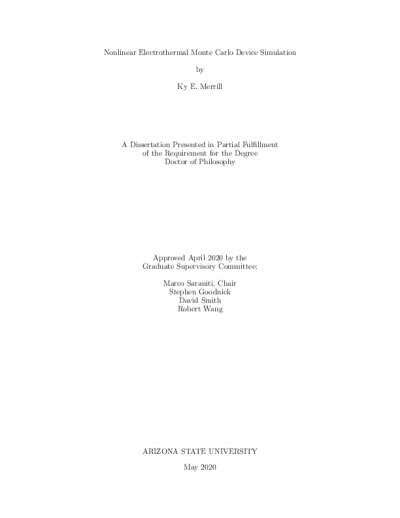Surface Interactions for Atomic Layer Deposition and Etching of Wide Band Gap Materials Based on Fluorine Chemistry

Description
In this dissertation, the surface interactions of fluorine were studied during atomic layer deposition (ALD) and atomic layer etching (ALE) of wide band gap materials. To enable this research two high vacuum reactors were designed and constructed for thermal and plasma enhanced ALD and ALE, and they were equipped for in-situ process monitoring. Fluorine surface interactions were first studied in a comparison of thermal and plasma enhanced ALD (TALD and PEALD) of AlF3 thin films prepared using hydrogen fluoride (HF), trimethylaluminum (TMA), and H2-plasma. The ALD AlF3 films were compared ¬in-situ using ellipsometry and X-ray photoelectron spectroscopy (XPS). Ellipsometry showed a growth rate of 1.1 Å/ cycle and 0.7 Å/ cycle, at 100°C, for the TALD and PEALD AlF3 processes, respectively. XPS indicated the presence of Al-rich clusters within the PEALD film. The formation of the Al-rich clusters is thought to originate during the H2-plasma step of the PEALD process. The Al-rich clusters were not detected in the TALD AlF3 films. This study provided valuable insight on the role of fluorine in an ALD process.
Reactive ion etching is a common dry chemical etch process for fabricating GaN devices. However, the use of ions can induce various defects, which can degrade device performance. The development of low-damage post etch processes are essential for mitigating plasma induced damage. As such, two multistep ALE methods were implemented for GaN based on oxidation, fluorination, and ligand exchange. First, GaN surfaces were oxidized using either water vapor or O2-plasma exposures to produce a thin oxide layer. The oxide layer was addressed using alternating exposures of HF and TMG, which etch Ga2O3 films. Each ALE process was characterized using in-situ using ellipsometry and XPS and ex-situ transmission electron microscopy (TEM). XPS indicated F and O impurities remained on the etched surfaces. Ellipsometry and TEM showed a slight reduction in thickness. The very low ALE rate was interpreted as the inability of the Ga2O3 ALE process to fluorinate the ordered surface oxide on GaN (0001).
Overall, these results indicate HF is effective for the ALD of metal fluorides and the ALE of metal oxides.
Date Created
The date the item was original created (prior to any relationship with the ASU Digital Repositories.)
2021
Agent
- Author (aut): Messina, Daniel C
- Thesis advisor (ths): Nemanich, Robert J
- Committee member: Goodnick, Stephen
- Committee member: Ponce, Fernando A
- Committee member: Smith, David
- Publisher (pbl): Arizona State University








